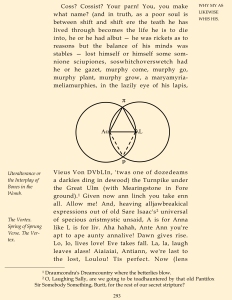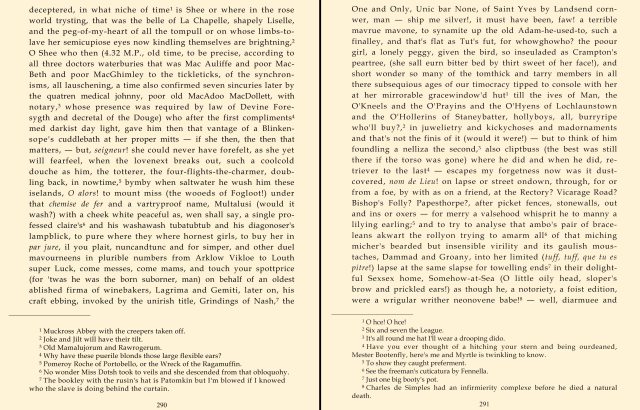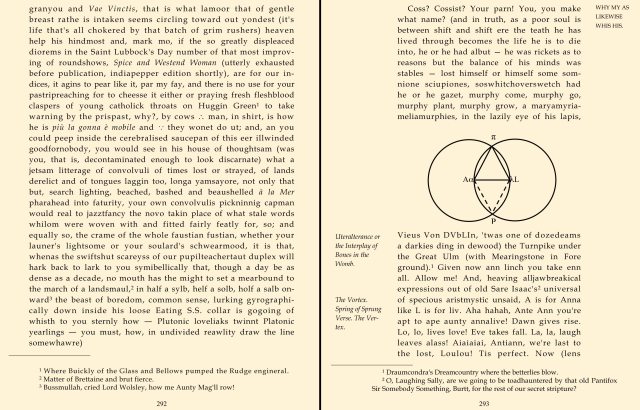 The above diagram is the result of working through “Proposition Number One” from Euclid’s Elements, in which ruler and compass are used to construct an equilateral triangle. The steps are simple enough: Draw two circles – one with A as center and AB as radius, the other with B as center and BA as radius. Let where they intersect be called C, and there you have your equilateral triangle: ABC.
The above diagram is the result of working through “Proposition Number One” from Euclid’s Elements, in which ruler and compass are used to construct an equilateral triangle. The steps are simple enough: Draw two circles – one with A as center and AB as radius, the other with B as center and BA as radius. Let where they intersect be called C, and there you have your equilateral triangle: ABC.
Question:
Why does Euclid specify complete circles? Seems a bit superfluous – wouldn’t arcs be more efficient? For one thing arcs would take up less paper – no small concern for an ancient Greek if the historians are correct. Plus, drawing complete circles creates two intersections, giving us redundant and potentially confusing data. So why?
Answer:
Euclid is not just a mathematician, he’s also an artist. The above illustration is much more aesthetically pleasing than its ‘efficient’ counterpart:
 Yuck.
Yuck.
Euclid knew: If you want something to last, make it beautiful. Never once in the entire Elements does he say “sweep an arc”, it’s always “draw a circle”. Circles are prettier, more satisfying. They give a sense of fulfillment, as if a journey has been undertaken and, once completed, has left absolutely nothing unfinished in its Wake.
No surprise then that circles should be ubiquitous in Finnegans Wake – from the frequent use of words like ’round’, ‘ring’, ‘circle’, etc. in its pages to the circular structure of the book as a whole. Joyce was pleased when his book wound up being exactly 628 pages long, for 6.28 is 2π – the formula for the circumference of a circle. And look at page 293:
What a pleasant page to look at. And notice that Joyce is gracious enough to complete the symmetry Euclid was forced to leave out as extraneous to his proposition. I suppose Euclid could have proposed something like “Construct a pair of equilateral triangles sharing one side“ or “Construct an equilateral rhombus” or something like that. But being mostly a mathematician, Euclid was not quite so bound to aesthetics as Joyce; he had other fish to fry.
Joyce however was mostly an artist, and his placement of this diagram in the center of page 293 has me convinced that this is the real center of the book. That’s right: after more than two decades of reading Finnegans Wake, I now conclude that 628 ÷ 2 = 293. Flimsy math, you say? Maybe, but there are ways to reach this conclusion. For one thing, the book’s final chapter (which starts on page 591) is set off from the rest of the book as a “ricorso” (a term Joyce borrowed from his favorite Italian philosopher Giambattista Vico, who posited that history is cyclical rather than linear) and so could feasibly be placed at either end of the book. So 590 ÷ 2 = 295: Take into account those numbered pages where no text appears (pages 1, 2, 217, 218, and 401-403), and there you have it: the gravitational center of the book is page 293, whose own center is occupied by an image which I’ve heard described as everything from colliding planets (viz. Lars von Trier’s Melancholia) to a dividing embryonic cell. It’s the beginning of the world, it’s the end of the world, and it all takes takes place in the middle of the book!
So I’m very excited to announce that JoyceGroup Santa Fe will be opening our books to page 293 this coming Saturday. And let me tell you – it’s been no easy task getting here. Just have a look at the pages leading up to it, starting on page 286:
Notice in the middle of 286: “Problem ye ferst, construct ann aquilittoral dryankle”. Euclid’s proposition is stated, and it looks like we’re going to get underway with it fairly quickly with “unbox your compasses” on page 287. But then notice how those fun marginal notes are pushed out by a bulging parenthetical body text, which makes no reference to the proposition whatsoever and goes on for a full five-and-a-half pages without so much as a single full-stop to give the reader any breathing room whatsoever:
Enough to make…
… your brain hurt…
…like Gumby.
We’ve been working on this monster parenthesis since mid-June – a total of 19 sessions – plodding through some of the most confusing and jumbled writing ever put to print. It’s one thing to distort vocabulary items; that can all be worked out with fweet and Roland McHugh. With their help, you’ll notice the usual thematic signposts: St. Patrick, Buckley/Russian General, Dermot/Grania, etc., but there’s no annotations project yet that can parse out all of the ambiguous pronoun references and muddy syntax this passage contains. I consider it to be by far the most difficult part in the book – almost pure chaos.
But to quote John Guare, the Kandinsky is painted on both sides. The elegant models of Euclid are elegant only when contrasted with the chaos that they are not. This all goes towards Joyce’s other favorite Italian philosopher, Giordano Bruno, who posited that polar opposites are not only defined by one another, but are in fact borne from the exact same substance; and this goes for all opposites – male/female, angel/devil, order/chaos, everything.
So I think reconciling the dichotomy of order/chaos is exactly what Joyce was working with when he wrote pp. 586-593, and this is perhaps what I’ve come to appreciate more than anything about his writing in general. Until Joyce came along, literature was always so elegant and ordered: Sonnets, villanelles, rondeaus, Freytag pyramids and the storytelling tropes of foolish cuckold, doomed adulteress, flower-sniffing poet, etc. Thanks to Joyce, these all became aesthetic options rather than requirements. An ordered universe can be beautiful, but it’s not always truthful.
I should remind myself of that when I find myself trying to force 293 into being exactly half of 628.





